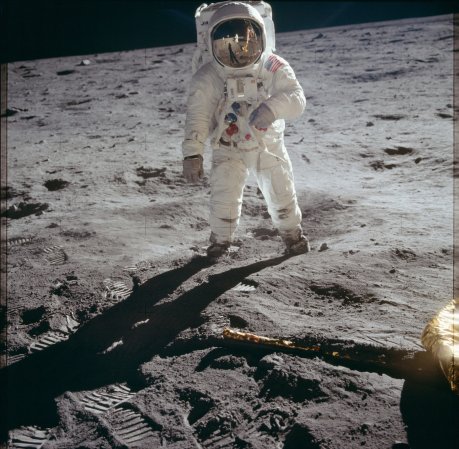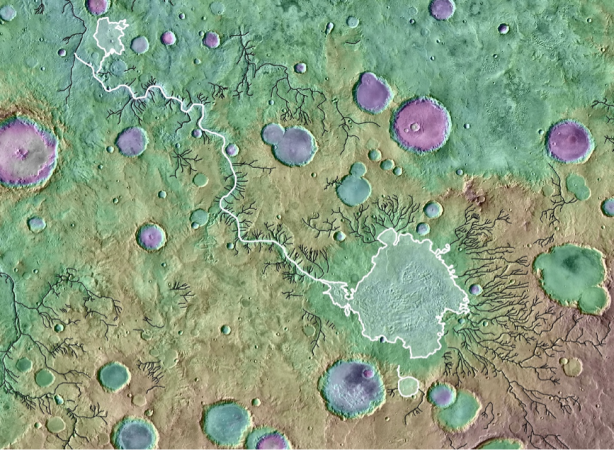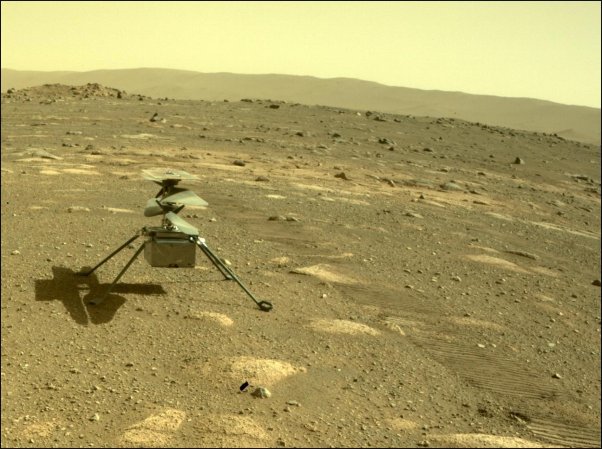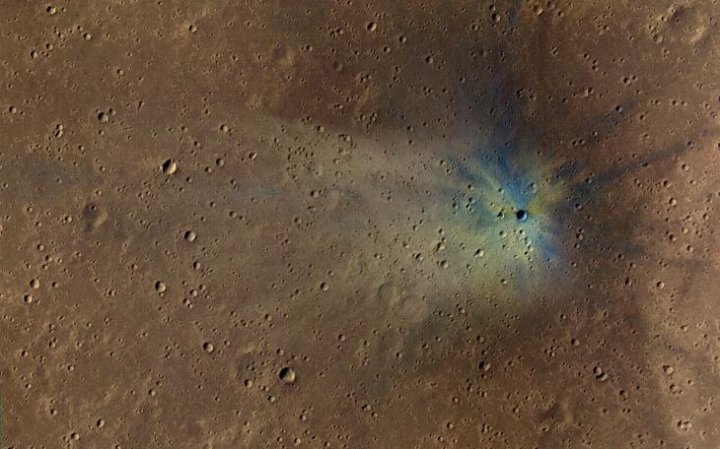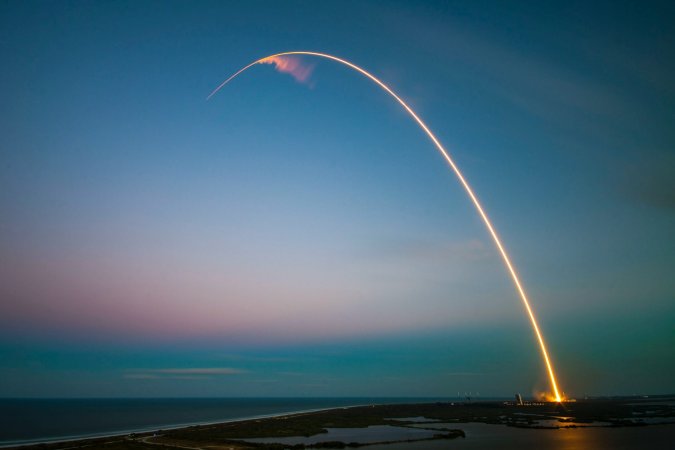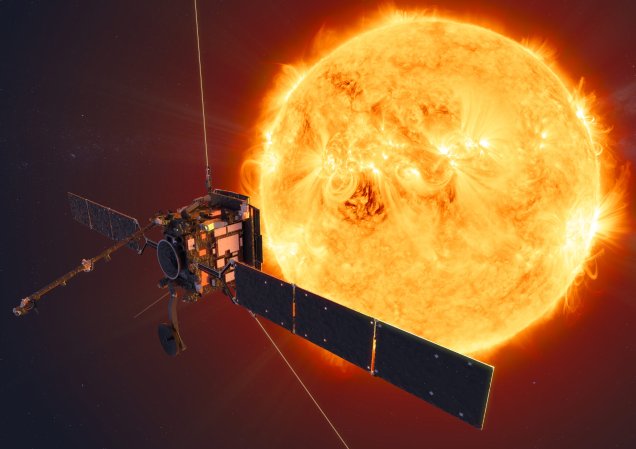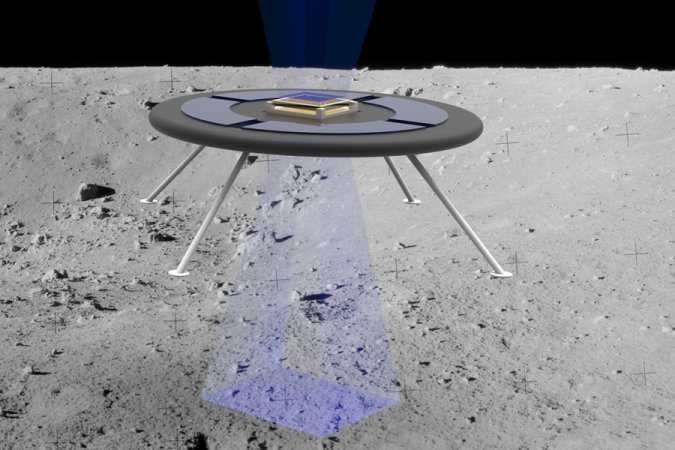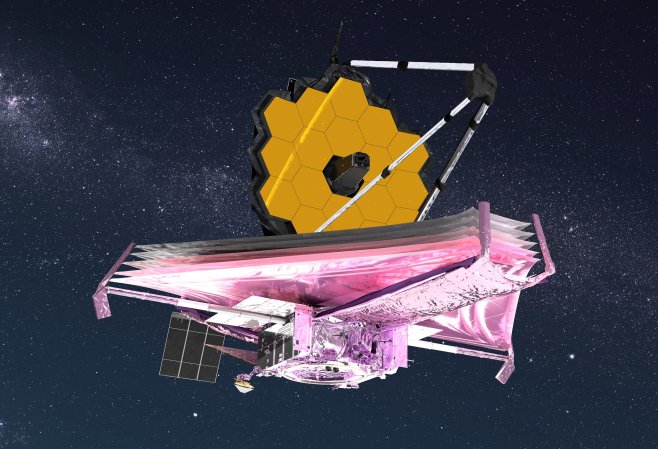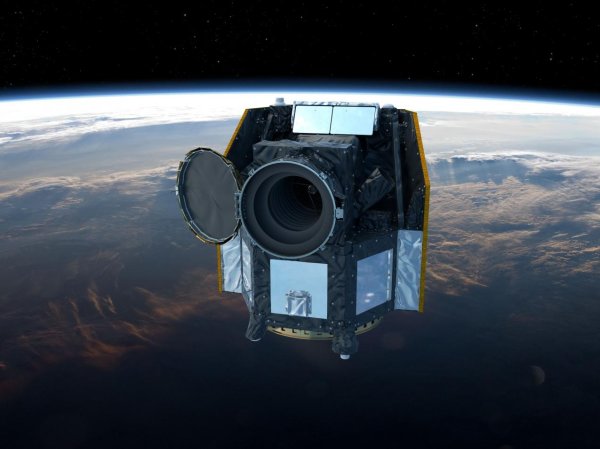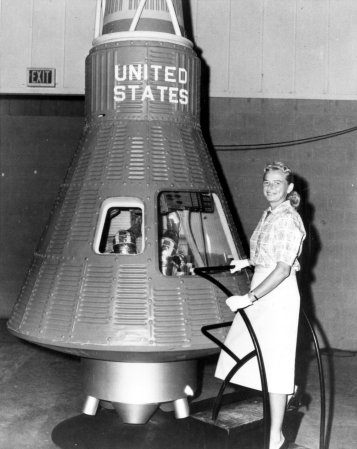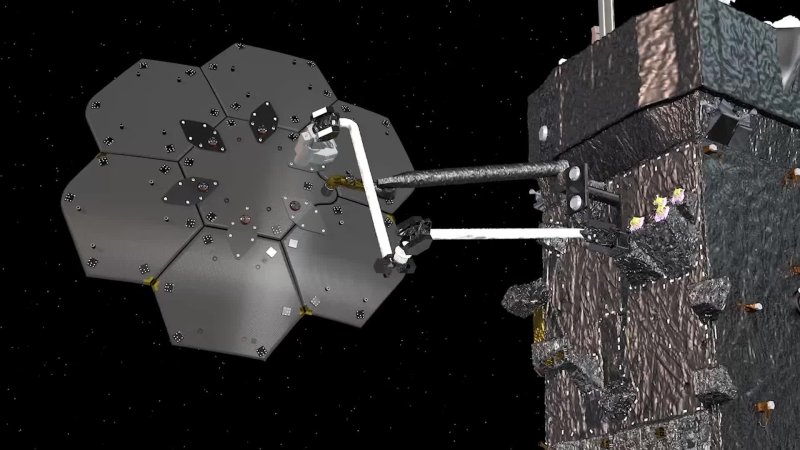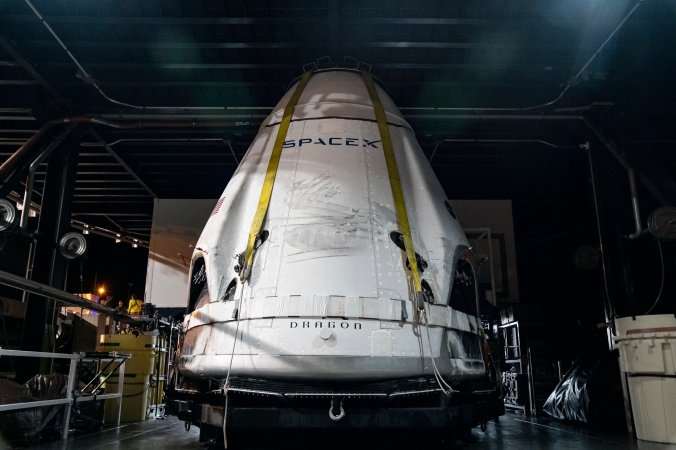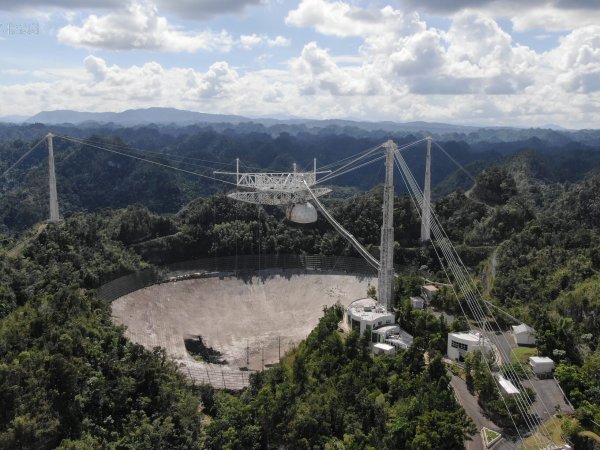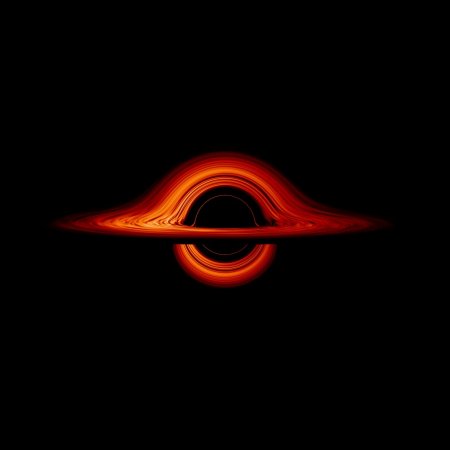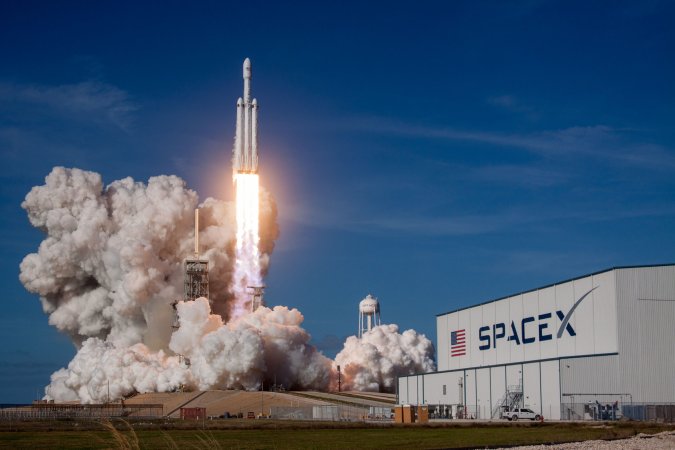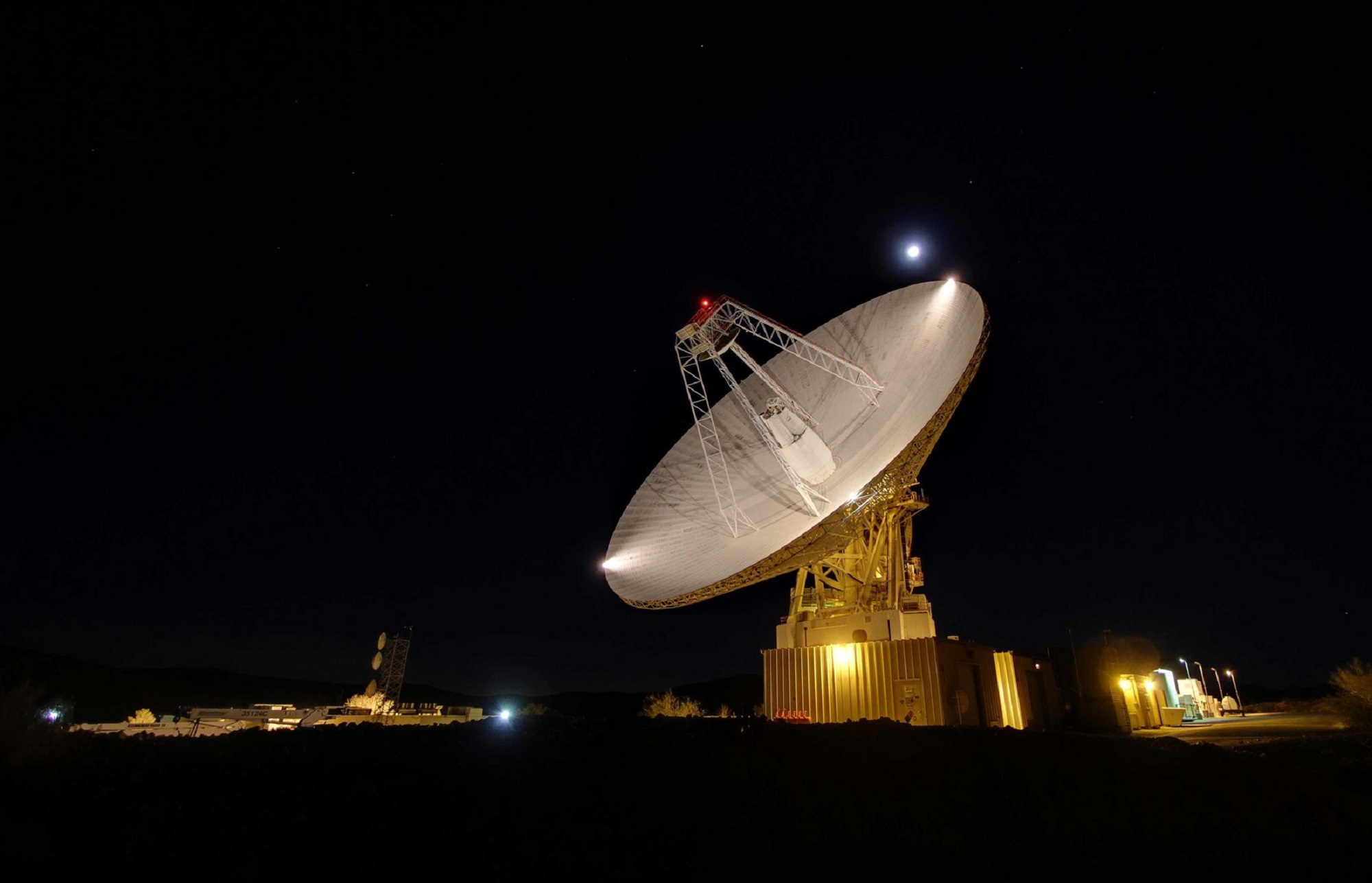

At the heart of nearly all of NASA’’s complex space missions is an unseen quartermaster, a key system often referred to as the agency’s “eyes”: the Deep Space Network.
The largest and most sensitive telecommunications system on the planet, the Deep Space Network, or DSN, is an international array of giant radio antennas. The network is made up of three ground-based facilities around the world, each located 120 degrees apart in longitude (or between 5,000 and 10,000 miles away) from each other, with one based at Goldstone near Barstow, California, another in Madrid, Spain, and the last in Canberra, Australia). This powerful network allows NASA to remain in constant communication with spacecraft that venture far beyond Earth’s orbit.
[Related: NASA is testing space lasers to shoot data back to Earth]
Operated by NASA’s Jet Propulsion Laboratory (JPL) in Pasadena, California, the system has played a crucial role in deep space communications since it began continuous operation in 1963. In its youth, the network was an important part of tracking and communicating with the Apollo 11 moon landing mission, and has since contributed to the well-being of dozens of NASA’s most historic projects. For instance, it helped transmit data back and forth from missions like DART, Lucy, the Solar Parker Probe, and the James Webb Space Telescope. As of 2021, the DSN tracks and supports 39 missions regularly, with another 30 more NASA missions in development.
Jeff Berner, the Deep Space Network’s chief engineer, says that the network still even tracks NASA’s Voyager probes—the twin crafts that launched in 1977 and continue to float far outside the solar system. “As spacecrafts get further away, the power received from a spacecraft goes down,” he says. “So the signal gets weaker and weaker as the spacecraft gets further and further away.”

For perspective, sending and receiving data to the moon and back (an average of 477,710 miles) would take only a few seconds, but the same signal sent to Mars (about 280 million miles round-trip) could take anywhere from 10 to 20 minutes to arrive. For a craft as far out of humanity’s range as Voyager, Berner says a signal’s two-way light time (the time it takes to get to the craft and back to Earth) could take upwards of 29 hours. Additionally, because any mission can be tracked using any of the DSN’s powerful antennas, the easy flexibility of this complex relay network is one of the reasons why the DSN is “truly a multi-mission system,” Berner explains. Each complex is home to a 230-foot-wide antenna and numerous 111-feet-wide ones that, besides communicating with spacecraft as Earth rotates, are also used to conduct radio science, like studying planets and black holes. But a close look at the inner-workings of this system reveals how integral the DSN will be to NASA’s latest push to reach the lunar surface with the Artemis program.
Getting Artemis I to the moon and back
Last week, NASA’s Orion spacecraft kissed the moon, and is now shuffling along right behind our satellite, covertly taking jaw-dropping new high-definition images of its crater-dotted surface. But if Orion is Earth’s latest spy, then the DSN is essentially mission control, the voice in every good hero’s ear.
According to the JPL, the DSN is currently supporting a large, constant influx of data from the uncrewed capsule, a process which will continue throughout its outbound journey, the mission maneuvers in between, as well as the craft’s much-awaited return. The process will ensure commands can be sent and data can be swiftly returned, even while deftly supporting the many other missions the network tracks. Artemis initially relied on NASA’s Near Space Network (NSN), another relay communications system managed by NASA’s Goddard Space Flight Center in Greenbelt, Maryland, that can connect with government or commercial missions in near-Earth orbit. But because its antennas aren’t able to get enough energy to support high data rates, or the rapid transmission of data to ground stations once a spacecraft goes beyond low-Earth orbit, the DSN became a better fit for Artemis to go the distance. Without the existence of the DSN, “you would not be able to get the data rates that they are getting for the moon,” Berner says. That means that all of those fantastic photos and images the craft has already sent back would certainly be less precise, and surely, more dull.
Just before Orion is slated to splash down back on Earth, the DSN will pass the baton back to the NSN once more. This handoff marks a new chapter of human space exploration—together with the Space Communications and Navigation program, the telecommunications systems will lay the groundwork for future crewed Artemis launches to the moon.
A space network for the future
To keep up with NASA’s jam-packed mission schedule, the nearly 60-year-old network will need a few upgrades. “We’ve got equipment that’s been in the network for 30, 40 years that, needless to say, is very hard to maintain,” says Berner, who was present when the DSN first began converting its analog systems to digital in the early 1990s. But bringing the DSN up-to-date with the latest technology “takes time and money.”
Berner says there are a number of improvements the network will undergo in the next few years to ensure it has the capability to support new missions, specifically NASA’s Gateway, an outpost that will orbit the moon and provide support for long-term human lunar and deep space exploration. Because many of those future systems will be using higher data rates at higher frequencies than previous missions, antennas at each DSN complex are being upgraded to support much higher data rates at uplink and downlink, or transmissions to and from a craft.
[Related: NASA is launching a new quantum entanglement experiment in space]
But as humanity once again seeks to plant its flag on the moon (hopefully more permanently this time), Berner notes that the success of a spacecraft mission often depends on the ground-based tracking system that supports them, a concept that can sometimes get lost in the mix and pushed to the shadows in celebration of new discoveries. Ultimately, behind every far-reaching, data-hungry spacecraft is a harmony of capable antennas enabling it to go further.
“When you see the pictures in the newspaper about the discoveries, [if] we didn’t have the network’s on the ground, you wouldn’t see any of this stuff,” Berner says.






